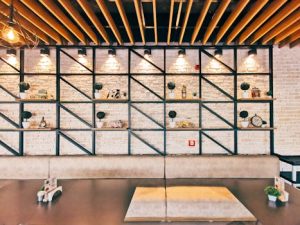The Subscription Economy: From Products to Lifestyle Services
In today’s society, people are constantly looking for new ways to make their lives easier and more convenient. With the rise of technology, the way we consume products and services has been completely transformed. One notable trend that has emerged in recent years is the subscription economy. From streaming services to meal kits, the subscription model has taken the world by storm, offering consumers a more flexible and personalized experience. But what exactly is the subscription economy, and how has it evolved from just products to lifestyle services? In this article, we’ll delve into the concept of the subscription economy and its impact on our daily lives.
The Rise of the Subscription Economy
The subscription economy can be defined as a business model where customers pay a recurring fee to access a product or service on a regular basis. It is a departure from the traditional model where customers pay a one-time fee for a product or service. This model provides customers with more flexibility, as they are not tied down to long-term contracts and can cancel their subscription at any time.
The rise of the subscription economy can be credited to the increase in digitalization and the need for convenience. With the advent of the internet, it has become much easier for businesses to offer subscription services digitally. This has opened up a whole new world of possibilities, allowing businesses to provide a wide range of products and services without the limitations of physical space.
Today, you can find a subscription service for almost anything – from streaming music and movies to meal kits, beauty products, and even clothing. This model has also been adopted by traditional businesses, such as newspapers and magazines, to keep up with the changing consumer preferences.
The Shift to Lifestyle Services
While the subscription economy started with products, it has gradually shifted towards lifestyle services. This means that instead of just providing customers with tangible items, businesses are now offering services that cater to their lifestyle needs. This shift has been driven by the changing consumer behavior and the desire for a more personalized experience.
One example of this is the rise of subscription meal kits. These services provide customers with pre-portioned ingredients and recipes delivered to their doorstep, making cooking at home more convenient and accessible. This not only saves time and effort for customers but also caters to their desire for healthier and more personalized meals. Similarly, subscription boxes for beauty and fashion products have also gained popularity, offering customers a curated selection of products based on their preferences.
But it’s not just about convenience and personalization. The subscription economy has also opened up avenues for businesses to offer lifestyle services that were previously not possible. For instance, companies are now able to provide subscription-based remote learning, fitness classes, and even therapy sessions, making these services more accessible and affordable for a wider audience.
The Benefits of the Subscription Economy for Businesses and Consumers
The subscription economy has been beneficial for both businesses and consumers. For businesses, this model provides a steady stream of revenue and predictable cash flow, which can be crucial for sustainability and growth. Additionally, businesses can gather valuable data on consumer behavior and preferences through their subscription model, allowing them to tailor their products and services accordingly.
On the other hand, consumers benefit from the flexibility and convenience of the subscription economy. They have the freedom to access products and services on their own terms without any long-term commitments. Moreover, the subscription model often offers a more cost-effective solution for consumers, as they can pay a lower fee than the traditional model for the same product or service.
The Future of the Subscription Economy
As technology continues to evolve, it is safe to say that the subscription economy is here to stay. It has become an integral part of the way we consume products and services and is constantly evolving to cater to our changing needs and preferences. The shift towards lifestyle services is likely to continue, with businesses finding innovative ways to provide personalized experiences for customers.
In conclusion, the subscription economy has transformed the way we consume products and services, offering customers more flexibility and personalization. It has also opened up new opportunities for businesses to offer a wider range of lifestyle services. As we move towards a more digitalized world, the subscription economy will only continue to grow and evolve, shaping our way of life in the future.





